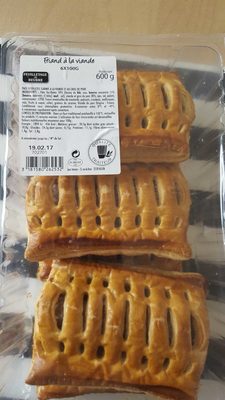Friand à la Viande - Leclerc - 600 g
This product page is not complete. You can help to complete it by editing it and adding more data from the photos we have, or by taking more photos using the app for Android or iPhone/iPad. Thank you!
×
Barcode: 3181580262532 (EAN / EAN-13)
Common name: Pâte feuilletée garnie à la viande et au gras de porc
Quantity: 600 g
Packaging: Plastic, Fresh, Protective gas
Brands: Leclerc, Jean Stalaven
Categories: Meats and their products, Meals, Meals with meat, Pork meals, Puff pastry meals, Friands, Meat in puff pastry
Labels, certifications, awards:
Green Dot
Origin of ingredients: France, fr:Viande de porc origine France
Traceability code: FR 22.389.003 CE - Yffiniac (Côtes-d'Armor, France)
Countries where sold: France
Matching with your preferences
Environment
Carbon footprint
Packaging
Transportation
Report a problem
Data sources
Product added on by openfoodfacts-contributors
Last edit of product page on by roboto-app.
Product page also edited by beniben, carolyn67, geodata, packbot, quechoisir, tacite.








